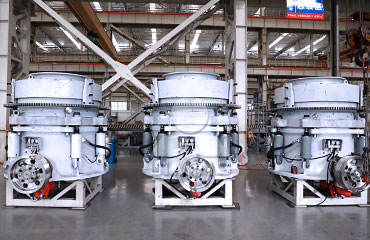Maintenance and Troubleshooting of Cone Crushers: Ensuring Efficiency and Longevity
Cone crushers are essential machinery in various industries, particularly in mining and aggregate production. Proper maintenance and timely troubleshooting are crucial for maximizing their efficiency and longevity. This article explores the best practices for maintaining cone crushers and common troubleshooting techniques to address potential issues.
Key Maintenance Practices for Cone Crushers
Effective maintenance of cone crushers involves several critical practices:
- Regular Inspections: Conducting regular inspections helps identify wear and tear early. This includes checking the liners, bearings, and drive components for signs of wear or damage.
- Lubrication: Proper lubrication of moving parts is vital to prevent friction and overheating. Ensure that the lubrication system is functioning correctly and use the recommended lubricants.
- Cleanliness: Keeping the crusher clean, including the cooling and dust collection systems, helps maintain optimal performance and prevents buildup that could lead to blockages or inefficiencies.
- Checking for Loose Parts: Regularly check for and tighten any loose bolts or components. Vibrations during operation can cause parts to loosen, leading to potential malfunctions.
- Monitoring Performance Metrics: Keep an eye on key performance indicators such as power draw, oil temperature, and pressure. Deviations from normal operating parameters can indicate underlying issues that need addressing.

Troubleshooting Common Cone Crusher Issues
Despite regular maintenance, cone crushers can experience various issues that require troubleshooting. Here are some common problems and their solutions:
- Inconsistent Product Size: If the product size is inconsistent, it could be due to worn liners or an improper setting. Inspect the liners for wear and adjust the crusher settings as needed.
- Unusual Noises: Unusual noises during operation can indicate issues such as loose parts, worn bearings, or damaged gears. Identify the source of the noise and address it promptly to prevent further damage.
- Overheating: Overheating can result from inadequate lubrication, clogged cooling systems, or overloading the crusher. Ensure proper lubrication, clean the cooling system, and check the feed rate to prevent overheating.
- Low Throughput: If the crusher is not processing material at the expected rate, it could be due to blockages, worn liners, or a faulty feed system. Inspect the feed system for blockages, replace worn liners, and ensure consistent material feed.
- Oil Leaks: Oil leaks can indicate issues with seals, gaskets, or the lubrication system. Inspect for and replace damaged seals or gaskets, and check the lubrication system for any faults.
- Mechanical Failures: Mechanical failures such as broken shafts or gears can occur due to excessive load or poor maintenance. Regularly inspect and maintain mechanical components to prevent such failures.
Best Practices for Cone Crusher Longevity
To extend the lifespan of cone crushers, consider the following best practices:
- Train Operators: Ensure that operators are well-trained in the proper use and maintenance of cone crushers. Knowledgeable operators can identify and address issues before they become serious problems.
- Use High-Quality Parts: Always use high-quality replacement parts that meet the manufacturer’s specifications. Inferior parts can lead to premature wear and damage.
- Implement a Maintenance Schedule: Develop and adhere to a comprehensive maintenance schedule that includes regular inspections, lubrication, and component replacement.
- Monitor Technology Advances: Stay informed about the latest technological advancements in cone crusher design and maintenance techniques. Implementing new technologies can improve efficiency and reduce downtime.
Conclusion
Proper maintenance and timely troubleshooting are essential for ensuring the efficient operation and longevity of cone crushers. By following best practices for maintenance and addressing issues promptly, operators can prevent costly downtime and extend the life of their equipment. Regular inspections, proper lubrication, and operator training are key components of an effective maintenance strategy for cone crushers.
- > Comprehensive Guide to Choosing the Right Jaw Crusher Model
- > How a Mobile Impact Crusher Revolutionized On-Site Concrete Recycling
- > The Role of Vibrating Feeders: Enhancing Efficiency in Material Handling
- > Portable Jaw Crushers for Quarry Operations in South Africa: Key Features and Benefits
- > Applications of Mobile Cone Crushers in Secondary Crushing for Sand and Gravel Aggregate Plants
- > Durable Cone Crushers for Hard Rock Gold Mining Processes
- > Jaw Crusher for Hard Rock Crushing in Tunnel Construction
- > Vertical Shaft Impact Crusher for Limestone Crushing in Venezuela


Online




Message
